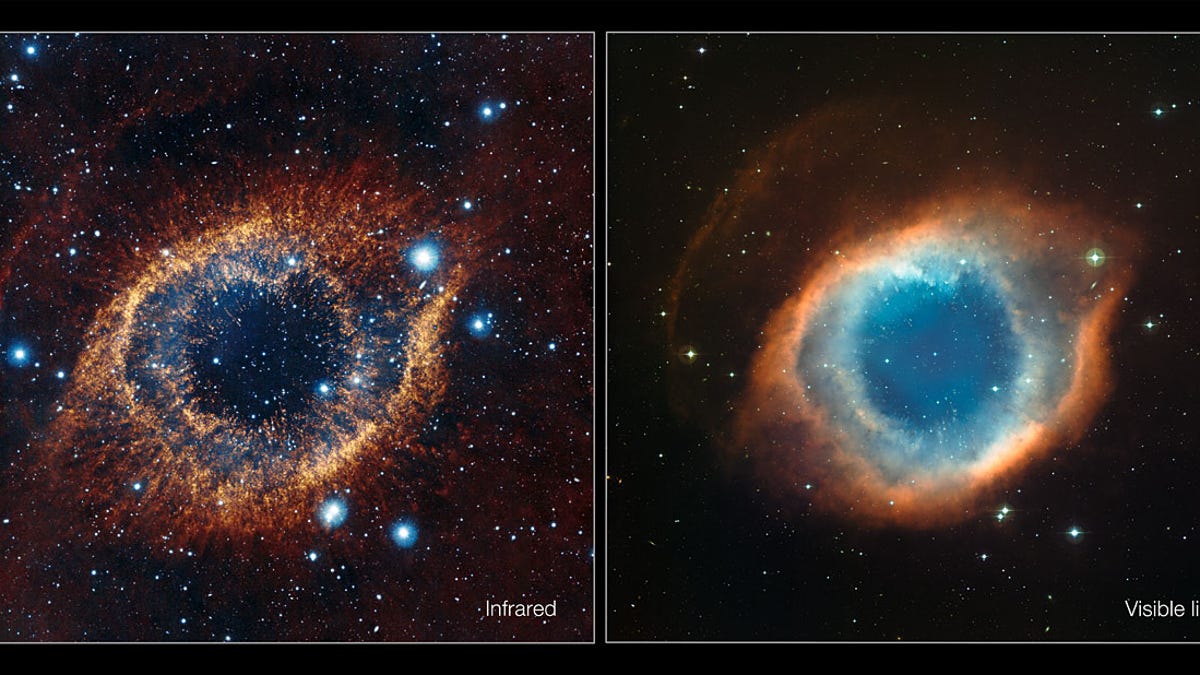Helix Nebula sparkles in a new light (video)
A newly released image of the planetary nebula taken in infrared light brings into view what normally can't be seen in visible light.

The Helix Nebula, which lies in the constellation of Aquarius, is one of the closest planetary nebulae to Earth.
Even so, it might take you awhile to travel there for a closer look--it being about 700 light-years away. Luckily, the European Southern Observatory has released a new image that provides a sharper view of the Helix Nebula, as seen in infrared light. Taken by ESO's VISTA telescope, at the Paranal Observatory in Chile, the image shows strands of cold nebular gas emanating from what looks like a giant eye. Thanks to the telescope's special detectors, the picture also brings forth an array of stars and galaxies.
Check out the video below from ESO that zooms you armchair space travelers right there.

